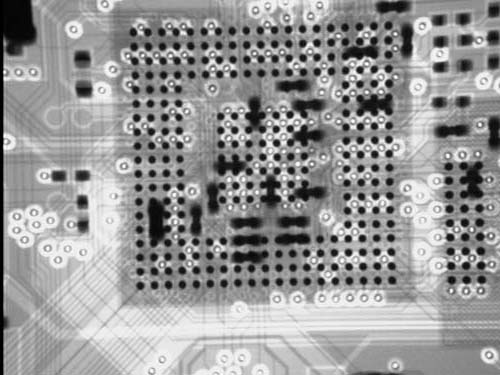I was eating dinner and sharing a couple bottles of wine with my friend Mike Fitzmorris last night, and he posed me this two-part question to which neither of us are quite sure about the answer:
Part one: Imagine an iron bar in free-space (no gravity, perfect vacuum, perfect darkness). If you impart a force such that it spins about the short axis, does it ever stop spinning?
It seems that with nothing around to apply a counter-force to the bar, it should spin forever, cosmological and bizarre quantum effects aside.
Part two: Imagine the same iron bar under the same conditions, but magnetized. If you impart a force such that it spins about the short axis, does it ever stop spinning?
The answer to this part seems to be that it should stop spinning eventually, but I can’t explain exactly why. The spinning magnetized iron bar would generate a fluctuating magnetic field, which means that it would be emitting some kind of remotely detectable signal, which, by definition, means that energy is being lost and therefore the bar should eventually stop spinning…
But exactly what is applying the counter-force to cause the bar to stop spinning? The bar is in a perfect free-space, so the electromagnetic waves will never interact with anything…The best explanation I could come up with is that the bar’s self-magnetic field is “catching up” with its emitted magnetic signature, and this interaction induces a counter-current in the metal which would cause an opposing magnetic field that would result in a net braking effect. I’m not very happy with this explanation, however.
Anybody know the correct answer to this question, or have a good explanation for why it might be so? There must be a simple answer and I’m just not seeing it.
[some edits and an addendum here to clarify this post]
A lot of interesting views in the comment area, thanks everyone for the thoughts!
Let me rephrase the thought experiment, because I think my poor phrasing has lead to many people to point toward flaws in the problem statement rather than the problem itself.
Suppose we think now of the spinning magnet in free space as a flywheel, and I couple energy out of the flywheel via a large coil. The changing magnetic field of this flywheel would cause electrons to move in the coil, and clearly since I am coupling power out of the flywheel via the coil’s capture of the changing magnetic field, the flywheel must slow down, otherwise energy is not conserved. In other words, the flywheel’s kinetic energy is converted into electrical energy by this mechanism.
If I remove this coupling coil, no energy is being directly removed from the system, so you might think, okay, the magnetic flywheel should not spin down ever since there are no mechanical frictional effects.
However, now imagine that I create an enormous superconducting coil that spans a diameter of 10 light seconds away from the flywheel. As I start spinning the flywheel, the changing magnetic field flows away at the speed of light. If the argument is that no energy is lost into this magnetic field, then the flywheel will not slow down at all. However, 10 seconds later, this magnetic field hits the coil, and all this energy is captured in the coil…but where did this energy come from?
Clearly, at time = 10 seconds, the flywheel can’t possibly begin instantaneously spinning down; the information about the presence of the coil would have to propagate its way back to the flywheel first, otherwise we have created a mechanism for transferring information at a rate faster than the speed of light. So for the “flywheel does not slow down” hypothesis to be valid, for a net 10 seconds, the system mysteriously has “extra” energy–I took energy out via the coil, yet the flywheel maintained its original rate of spinning and all its kinetic energy for the 10 seconds that it took for the information about the existence of the coil to make it back to the magnetic flywheel.
Therefore, in the absence of any device to couple energy out of the system (other than radiation to free space), the flywheel must slow down with time, otherwise I can spontaneously create energy. Therefore, there must be a completely local mechanism within the flywheel that causes the energy to be debited at the instant that it radiates from the flywheel. This is true whether the bar spins near the speed of light, or if it spins very slowly as any changing magnetic field can compel an electron to move and therefore transfer energy to another part of the system.
It is this local energy-debiting mechanism that I am trying to grasp. Any explanation also has to work if I replace the iron bar with a non-conductive magnet, like a ceramic or organic magnet. That’s a flaw in my counter-eddy current explanation that I proposed above.
Here is a quick sketch that helps illustrate the question.

